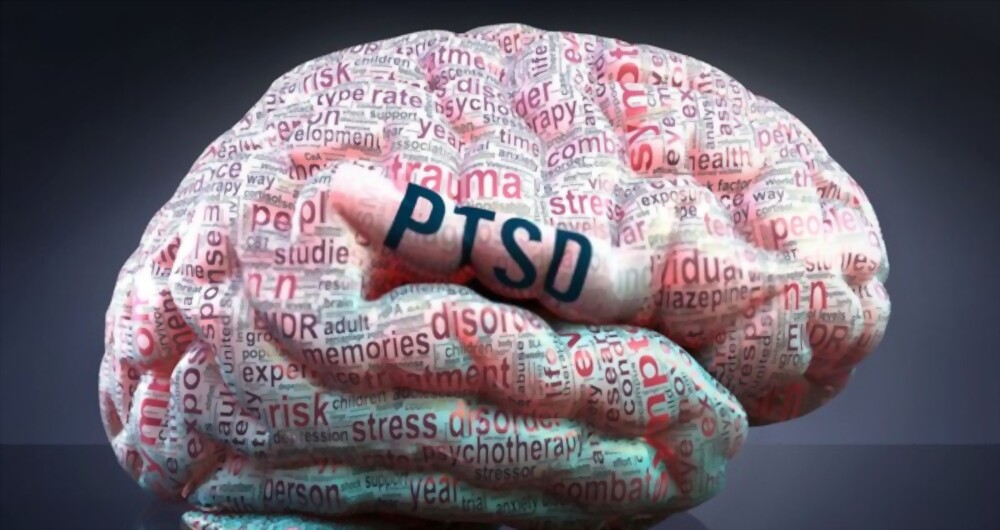All you need to know about Post Traumatic Stress Disorder
What is Post-traumatic stress disorder?
According to the American Psychiatric Association, post-traumatic stress disorder is a mental health condition that occurs in people who have experienced a traumatic event such as violence, rape, death, accidents, natural disasters, and war or terror attacks (1). The term is commonly abbreviated and perhaps more recognizable as “PTSD.”
While some people go through distressing events and manage to adapt and move on with their lives, others do not. According to the American National Center for PTSD, about 6 out of every 100 people in the population will have PTSD at some point in their lives. And about 12 million adults in the U.S. have this disorder during a given year (2).
How do people react to threats?
The human body responds rapidly in situations of threat to decrease, end, or elude danger. There are 4 main reactions to threats known as the 4Fs:
- Fight: Facing any threat aggressively
- Flight: Running away from a dangerous situation
- Freeze: Inability to move or act against the danger
- Fawn: pleasing and pacifying the threat to be safe
The Symptoms of PTSD
Symptoms of PTSD commonly manifest within one month after a traumatic experience. These symptoms prevent the person from living a regular day-to-day life, performing normal tasks, and maintaining a social and work life.
The symptoms can change over time and vary from person to person. Symptoms are classified into four main groups.
Intrusive memories
After a traumatic event, the victim tends to have intrusive thoughts and memories related to it. It can take the shape of repeated upsetting dreams and nightmares. The person who suffered from trauma can also show signs of dissociation such as flashbacks, feelings of imminent danger along with the illusion that the event is happening again. They can experience chronic physical reactions, such as an increased heart rate, shakiness, rapid breathing, upset stomach and, eating disorders.
Avoidance
People with PTSD usually avoid reminders of the traumatic event like people, activities, places, and objects that could trigger the bad memories. Victims may also avoid discussing their feelings or any details related to the traumatic event.
Changes in thinking and mood
People suffering from PTSD may experience a negative emotional state (feelings of shame, anger, or fear). Such feelings may also include some “memory holes,” meaning the incapacity to remember important details of the event, blaming self for the cause or the consequence of the event, loss of interest in activities, feelings of detachment, and inability to experience positive emotions.
Changes in physical and emotional reactions
PTSD results in constant feelings of hypervigilance, meaning that the person is always on guard or in a state of alert as if danger is still around them and can appear at any time. Some related symptoms affect cognitive functions like difficulty concentrating, heightened startle response, irritability, aggressive behavior, impulsive or self-destructive behavior, and trouble sleeping.
The intensity of the symptoms may vary significantly over time. These symptoms can increase during periods of stress or when they come across certain reminders of their experience. For example, a victim of sexual assault seeing news reports on a similar case might make the person relive their own experiences (3).
How to Treat PTSD
Some PTSD symptoms could decrease and disappear over time. Some people can get better with the help of their loved ones and their support systems like friends and family, while for others, it can be different. They might need professional help to recover from their distress; the earlier the treatment, the better the chances of recovery. Mental health specialists may help; however, it is crucial to conduct a detailed evaluation of the symptoms before starting therapy. Below are various ways to treat this disorder.
Medications
Antidepressants are considered the first line of treatment for PTSD specifically, with mood, anxiety, eating, and sleep. If the medication is effective for the patient, it can be taken for at least 12 months, and after that, the dose can be gradually be reduced until withdrawn.
Cognitive Behavioral Therapy (CBT)
This method has shown to be efficient across populations dealing with trauma. The therapy involves helping patients confront their traumatic events to decrease distress. CBT is based on “Prolonged Exposure.” In this situation, the therapist will ask the patient suffering from PTSD to recall the details and describe its aspects. CBT has proven to be helpful in people showing symptoms of avoidance. For instance, the therapist might help by encouraging the victim to restart the avoided activities since the traumatic event, such as driving a car if they had an accident.
Eye Movement Desensitization and Reprocessing (EMDR)
Developed in the 1980s, this therapy is designated to alleviate the distress that is linked to traumatic memories and PTSD. It’s a method that uses repetitive eye movements to interrupt some disturbing memories. The patient has to recall the incident in detail while focusing on the movement of the therapist’s finger, going back and forth, or tapping and playing sounds.
Group therapy
It has been shown that group therapy is very efficient in managing PTSD. Being in a group of people that more or less experienced the same trauma will make the victim feel they are not facing this alone. This form of therapy has great benefits when it comes to validation because the trauma is easier to recognize and validate among members who are dealing with an approximate situation.
Coping
As PTSD affects the victim’s everyday life, there are different ways to cope with it. It involves practicing self-care and indulging in relaxation activities like yoga and mindfulness practice. Victims are encouraged to abstain from alcohol and drug use and confide in a trusted person when in distress.
In conclusion, PTSD is very difficult to live with; it can affect the victims and the people around them. It is important to understand it and offer help and support to those suffering from it.
By: Yasmine Hamrouni (psychologist)







Comments (0)